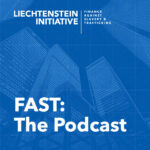The FAST Blueprint (September 2019) sets out five Goals and thirty Actions for financial sector actors to address modern slavery and human trafficking.
This Insight focuses on the role of investor engagement under FAST Goal 3.
The FAST Blueprint (September 2019) sets out five Goals and thirty Actions for financial sector actors to address modern slavery and human trafficking.
This Insight focuses on the role of investor engagement under FAST Goal 3.

If you prefer to learn by listening, check out Finance Against Slavery and Trafficking: The Podcast.
This series explores the connection between global finance and modern slavery and human trafficking, looking at all the different ways the financial sector can harness its leverage to end modern slavery, forced labour and human trafficking.
Episode 5 of the podcast focuses on investor engagements.